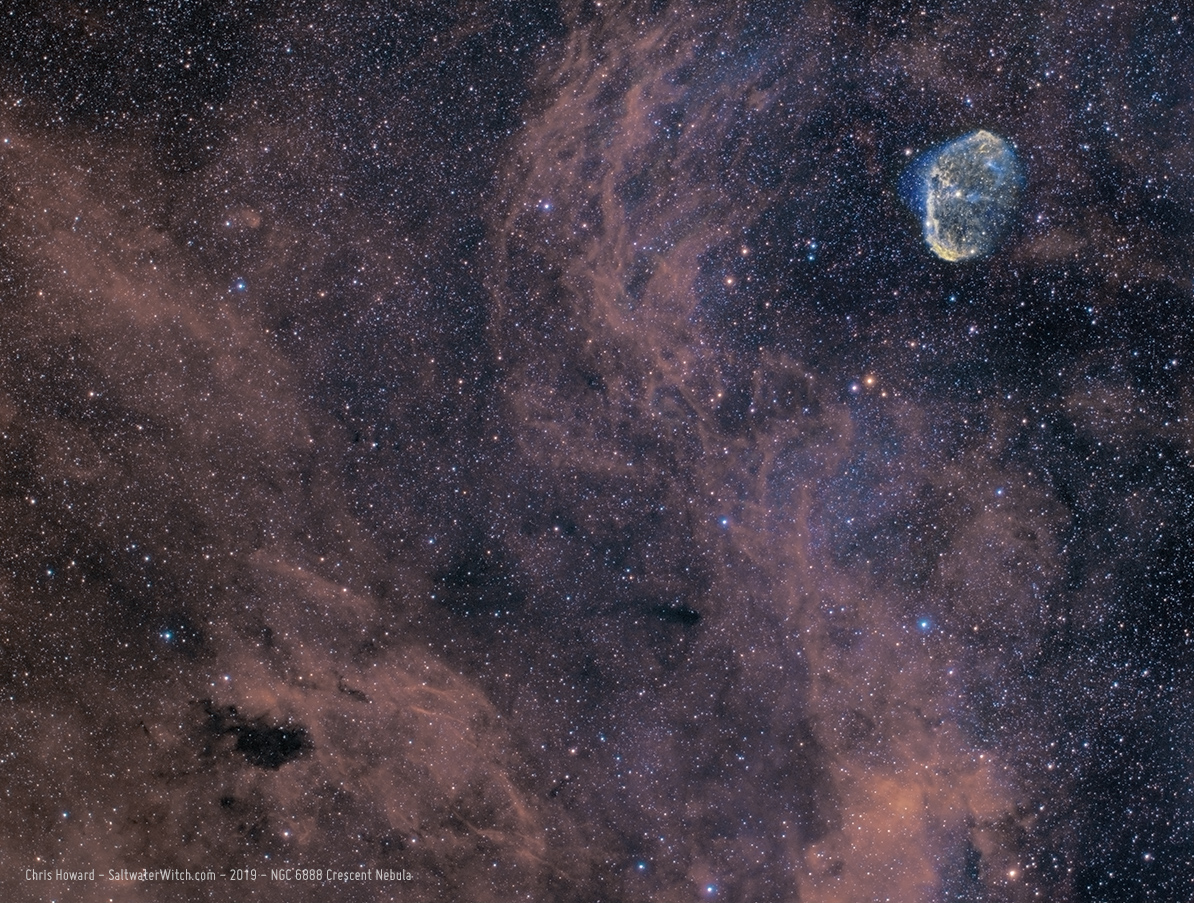More from Cygnus: Crescent and Tulip Nebulae
June 12, 2019
The Crescent Nebula, NGC 6888 (top right) is an emission nebula in the constellation Cygnus, about 5000 light-years away. Like most of this region around Cygnus, you can't do anything in hydrogen-alpha or sulfur2 without wading through clouds of the stuff—billowing, eddying, and general nebulousing. It's beautiful. There's a Wolf-Rayet star, WR 136, at the lower left edge of the Crescent Nebula (from this angle), and it's stirring up violent stellar winds and blazing quickly through its life; it's expected to go supernova in a couple hundred thousand years, and it's only a four or five million years old. WR stars are unusual: they're very bright--thousands of times brighter than our sun, and they burn much hotter, thousands of times hotter than almost all other stars. And they have very short lifespans.
Notes: 31 x 240 sec Ha, 33 x 240 sec OIII, 29 x 240 sec SII, Astronomik Ha, OIII, and SII filters, William Optics GT81 at f/4.7 with WO 0.8x Flat6A II, Moonlite focuser, ZWO ASI120MM OAG, Imaging camera: ZWO ASI1600MM Pro cooled mono on an iOptron CEM25P mount.

Sharpless 2-101, the Tulip Nebula (top left) is an emission nebula in Cygnus, about 6,000 light-years away. The microquasar Cygnus X-1 is the bright star just above the top point of the Tulip in this image. Cygnus X-1 is famous for being one of the first suspected blackholes, as well as a famous bet between physicists Stephen Hawking and Kip Thorne over that possibility. Hawking conceded to Thorne in 1990 as evidence for a blackhole mounted. Although the Tulip (Sh 2-101) stands out brightly with oxygen in blue, the whole region around the constellation Cygnus is cloudy with interstellar dust and gas. Notes: Astronomik Ha, OIII, and SII filters, William Optics GT81 at f/4.7, ZWO ASI1600MM Pro cooled mono camera, on an iOptron CEM25P mount.

